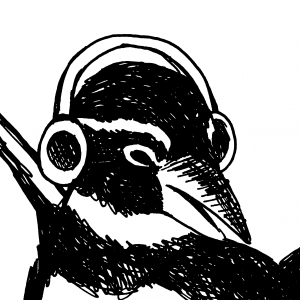
Actually, radio is the most visual of all media. It creates pictures in your head, where they mean the most. A picture you invent in your head has more impact and staying power than one you simply observe.
Sound is often more involving than an image because it seems all around you. Here is a thought experiment: Imagine you walk into a large building and immediately hear a string quartet playing. No matter where you walk in the room, you are “in tune” with the music. Later you notice that a famous painting is hung on one wall. Chances are it took some time to notice it. You can turn your back on the picture but you will hear the string quartet no matter what your head position. And you will need to study the painting to “get into it.” The sound will produce an immediate emotional effect and it will seem to surround you.
This effect is emphasized when someone is wearing earbuds or headphones. These days a huge number of people, especially younger ones, walk around with some kind of headphone attached to a cell phone or music player.
The term “radio” may sound old fashioned (as in “first we had radio, then TV, and now the computer”) but radio is actually a very current medium thanks to the internet and cell networks. Broadcast radio, even in its traditional over-the-air FM or AM form, is still important, especially in small markets. These days nearly everyone has cable or satellite TV so if someone decides to watch TV he or she can choose from dozens or hundreds of channels. TV isn’t very local any more. Even most TV stations, except in very large markets, mostly broadcast programming from network sources.
But most small markets have only a small number of radio stations. So someone who listens to radio over their morning coffee or while driving to/from work is choosing from a smaller number. And often the programming is local, even if only a DJ playing hits, reading news and local announcements. An advertiser can buy time on a radio station and know the company is getting a good local reach.
But “radio” does not mean just local broadcast radio. Podcasting is becoming a major audio medium, even many broadcast stations are doing it. These services can offer a very targeted audience for a specific market or interest, such as pets, cars, etc. A good deal for both content producers and advertisers.
So what is the “takeaway” from all of this? Sound-only content and advertising can be a very powerful way to reach people. It can also be economical. Very professional results can be obtained at a fraction of the cost of television.
BUT, it is important to take advantage of the real power of audio. Understanding how voice, ambient sound, sound effects and music can be combined effectively to make audio-only communication a powerful form of communication.
In future posts The Audio Penguin will talk about ways to make sound communication more effective without costing tons of money for production. Stay tuned.
Leave a Reply